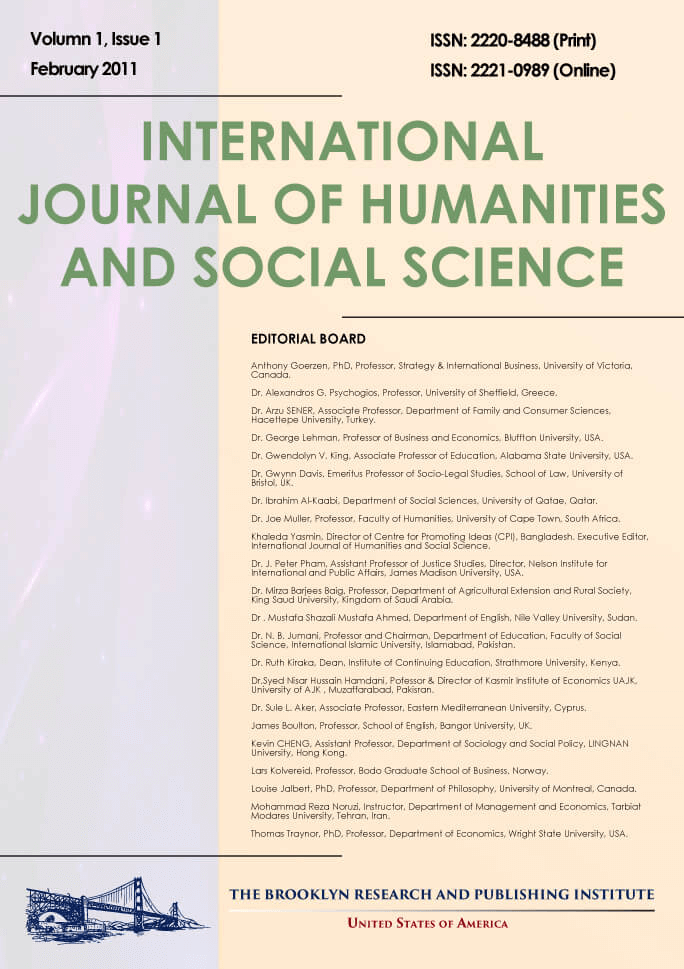NET IRRIGATION REQUIREMENTS FOR MAIZE AND SORGUM IN ISRA-NIORO, PROVINCE OF KAOLACK (SENEGAL)
Demba Diakhate
Abstract
The aim of this work is to provide an easy methodology for the estimation of the Net Irrigation Water
Requirements (Irnet) to be used in any developing country as first step in irrigation systems design. The present
study uses state-of-the-art software to allow answering the question “Is the introduction of irrigation useful in the
specific agro-climatic conditions in order to increase crop yield?”. For better understanding, the present study
applied the suggested methodology to two typical hot climate crops (maize - Zea mays - and Sorghum (Sorghum
bicolor L.), cultivated in the Nioro of Rip area, Kaolack region (Republic of Senegal). To estimate and examine
all required data, different software were utilized. FAO software (CROPWAT 8.0 and New_LocClim) were
adopted to compute Reference Evapotranspiration (ETo), Crop Water Requirements (CWR) and Net Irrigation
Water Requirements (Irnet) of the two analysed crops. Excel (version 2007) was used to examine the rainfall data
from a statistical point of view in order to have a frequency analysis for the considered events. Daily climatic
data for a seven-year time period (January 2001 - December 2007) were analysed to calculate ETo. These data
were obtained from the Agro-meteorological Station of ISRA-Nioro research (Kaolack region, Republic of
Senegal). During the considered seven-year time period, in almost all cases, total rainfall is over 760.6 mm per
year. It means that effective rainfall (computed utilizing the USDA S.C. Method) is around 536.4 mm. In rainy
season, CWR for maize was 414.0 mm and 417.6 mm obtained respectively from New_LocClim method and
Meteorological station method. And his Irnet was 9.9 mm and 5 mm obtained respectively from New_LocClim
method and Meteorological station method. The same approach was applied for the case of sorghum. CWR for
sorghum was 362, 5 mm and 365, 2 mm obtained respectively from New_LocClim method and Meteorological
station method. And his Irnet was 2.9 mm and 0.0 mm obtained respectively from New_LocClim method and
Meteorological station method.
In rainy season condition for both crops (maize and sorghum), yield reduction has been equal to 0.0%.
Knowing the CROPWAT approximation level, for practical purposes those values can be neglected and both
crops can be assumed to produce at their maximum. Given that in rainfed conditions no water stress is
practically observed along the entire crop cycle, we can affirm that no irrigation system is needed to be
designed in such a specific climate and soil conditions.
In conclusion, the best choice for seeding in dry season in Nioro area is to seed in November. Indeed, seeding
in November can be beneficial for both crop as maize and sorghum. In this situation, plantation still produces
its maximum and yield reduction equal 0.0%.
Full Text: PDF
International Journal of Humanities and Social Science
ISSN 2220-8488 (Print), 2221-0989 (Online) 10.30845/ijhssMENU
Call for Papers
International Journal of Humanities and Social Science (IJHSS) is a monthly peer reviewed journal
Read more...Recruitment of Reviewers
Reviewer's name and affiliation will be listed in the printed journal and on the journal's webpage.
Read more...
Visitors Counter
23440634
| 9946 | |
| |
9619 |
| |
257656 |
| |
337680 |
| 23440634 | |
| 443 |
